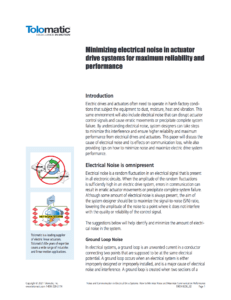Minimizing electrical noise in actuator drive systems for maximum reliability and performance
Introduction
Electric drives and actuators often need to operate in harsh factory conditions that subject the equipment to dust, moisture, heat and vibration. This same environment will also include electrical noise that can disrupt actuator control signals and cause erratic movements or precipitate complete system failure. By understanding electrical noise, system designers can take steps to minimize this interference and ensure higher reliability and maximum performance from electrical drives and actuators. This paper will discuss the cause of electrical noise and its effects on communication loss, while also providing tips on how to minimize noise and maximize electric drive system performance.
Electrical Noise is omnipresent
Electrical noise is a random fluctuation in an electrical signal that is present in all electronic circuits. When the amplitude of the random fluctuations is sufficiently high in an electric drive system, errors in communication can result in erratic actuator movements or precipitate complete system failure. Although some amount of electrical noise is always present, the aim of the system designer should be to maximize the signal-to-noise (S/N) ratio, lowering the amplitude of the noise to a point where it does not interfere with the quality or reliability of the control signal.
The suggestions below will help identify and minimize the amount of electrical noise in the system.
Ground Loop Noise
In electrical systems, a ground loop is an unwanted current in a conductor connecting two points that are supposed to be at the same electrical potential. A ground loop occurs when an electrical system is either improperly designed or improperly installed, and is a major cause of electrical noise and interference. A ground loop is created when two sections of a given system are connected to two different earth grounds. If these two earth grounds are at different potentials, a spurious current will flow and introduce noise into the system. This difference in voltage potential is most likely caused by a poor or corroded ground connection, or by motors, compressors and other high-current electrical devices operating on the system. As a result, the current that flows between the different earth grounds will contain electrical noise that is injected directly into the system and appears everywhere.
In a complex system of electric actuators and drives, many drives may be connected to the same communication bus, such as CAN Open, Ethernet or RS485. Typically, these communication cables are shielded with foil, braid or both. For shielding to be effective, the shielding material (braid / foil) must be connected to ground. This means that all of the drives that are connected to the same communication bus need to be connected to the same ground, which is also connected to the bus host controller.
Each drive is powered by its own power supply, which is typically plugged into a grounded power outlet. Unless all of the drives and the host bus controller are plugged into the same outlet, a ground loop could be created. If a single drive is plugged into an outlet that has a different earth ground than the rest of the system, a ground loop can form. Unless a designer has complete control over the installation site for the system, it is almost impossible to predict where a ground loop will appear. Ground loops can only be detected and mitigated after the system is installed. If the ground loop noise is great enough, the system may operate erratically or completely fail to function. In short, current should never be allowed to flow between a system’s earth grounds (see Figure 1).
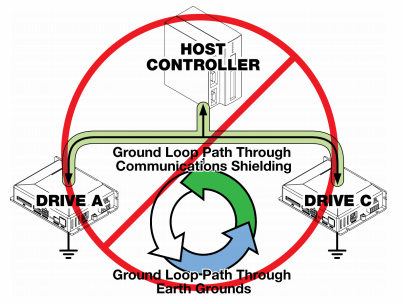
Figure 1: This system is set up to invite ground loop noise between earth grounds.
Mitigation strategies for ground loop noise
- A single-point earth ground for the entire system will help prevent ground loops from forming (see Figure 2).
- In large systems where a single-point earth ground is not possible, the grounds can be physically connected. A small resistance should be inserted between the two (or more) grounds to limit the amount of current flowing between the grounds, which will in turn reduce the noise and ensure that the ground’s potentials are relatively close to each other. A good starting point for this resistance is 10 ohms.
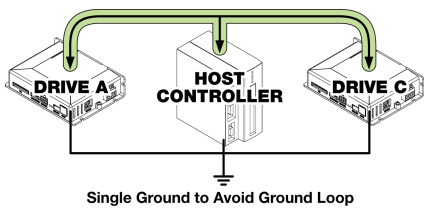
Figure 2: This illustration shows the proper way to install a system to best mitigate ground loop noise.
Induced electrical noise
In servo drive circuits that utilize high-current switching signals with sharp edges, sections of the circuitry can act as antennae and induce electrical noise into nearby conductors or equipment. This is called EMI, or electromagnetic interference. It is important, therefore, to measure this noise and certify the level of EMI emissions in applications that employ these types of components. This certification will help ensure that the electrical noise will have a minimal impact on other nearby electrical systems. It is also important to certify the unit with the motor and communication cables plugged into the drive. EMI can be minimized by following good printed circuit board (PCB) layout rules. Power cables and communication lines can be both transmitters and receivers of noise. EMI noise coupling occurs when electromagnetic noise emitted from the drive is picked up on the power cables or communication lines. Power cables and communication lines can also induce noise into a nearby drive. This coupling magnifies the noise internally and can cause communications failures and device instability. The primary noise source on a servo drive is switching noise, which will typically be emitted from the motor cables (see Figure 3).
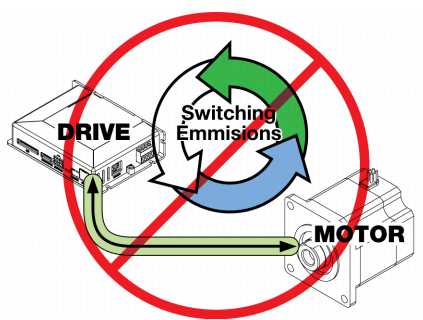
Figure 3: This figure illustrates the switching noise that can be created from improper installation of the motor cables.
Mitigation strategies for induced electrical noise
- Optimize the length of motor and communication cables. When routing cables, make sure they are mechanically secure, and that the cable length is not excessive. Unnecessary coils of wiring add resistance and inductance to the system, which can affect motor tuning. Longer cables also emit and receive more noise.
- Use properly shielded motor and encoder cables. The motor cable should be shielded with foil or braid to mitigate the switching noise. Higher quality cables that include both foil and braid can be used, but their additional cost needs to be weighed against the desired level of reliability. The cable shield should be connected to ground through the drive connector. The communication lines should also be shielded, per industrial specifications.
- Separate the motor and encoder cables. Many times, encoder cables and motor cables share the same connector to the motor. They also typically plug into connectors that are in close proximity on the drive. The physical paths they take from the motor to the drive can be similar, but as a general rule, try to maintain at least 2 inches of separation between the cables to reduce inductive coupling (see Figure 4).
- Cable shielding should be grounded on only one end of the cable. Shielding that is grounded at both the drive end and the motor end can generate ground loops. Typically, the cable is grounded at the drive end.
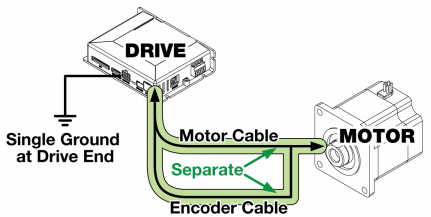
Figure 4: Providing a single ground at the drive end and maintaining separate distances between motor and encoder cables will mitigate over the air noise in the system.
Communications Noise
Device communication is typically very susceptible to external electrical noise. Most industrial communication protocols have been specifically designed for survivability in the presence of noise. Control systems capable of error and data loss detection in device-to-device communication is essential in noisy environments. In addition to the software/firmware that drives the communication protocol, the cabling also must be designed to protect the communication from outside interference.
Mitigating communications noise
- The cabling should utilize twisted pairs, which means that pairs of signal wires are twisted together in order to cancel out electromagnetic interference.
- The cabling should be shielded for use in industrial environments.
- Cable shielding should be grounded.
- Cabling should be as short as possible. Pay careful attention to routing. Having excessive length or coils of communication cable is bad practice and can increase susceptibility to noise. Reference the table below for best practice cable recommendations. Recommendations for various cable types can be found below.
Recommendations for various cable types can be found below.
| Cable Recommendations | ||||
|---|---|---|---|---|
| Cable Type | Shielding | Category | Topology | Voltage |
| Ethernet 100Mb/s | Foil | Cat 5a or Cat 6, Class D or E | Point to Point/ Network2 | 2.5 V Differential |
| Ethernet 1Gb/s,10Gb/s | Foil | Cat 6 or Cat6a,Class E | Point to Point/ Network2 | 2.5 V Differential |
| RS-485 (TIA485) 10Mb/s | Foil | Cat 5 or 5a | Point to Point/ Network2 | 6 V Max Differential |
| USB 12 Mb/s Full Speed1 | Foil | USB Certified Hi-Speed | Point to Point/ Network2 | 5 |
1 USB is not recommended for industrial environments. With its low signal levels, and noise filtering requirements, the presence of noise can provide huge problems with reliable communications. Typically, only Full Speed options are available for actuator drives. This is primarily because of the presence of ambient noise in the environment. Large filters need to be added to the USB lines to filter out this noise, which also happens to filter out High Speed and Super Speed communications. USB is normally used strictly for configuration and not for control.
2 Most industrial communications solutions will require twisted pair shielded cable for differential communications
Communications Survivability
The communication link between the drive and the PLC controller is the main artery of the motion system. If communication between the two is severed, motion stops. Because of this, line protection is imperative. Following are a few guidelines that should be employed to reduce the risks of a communication outage.
Mitigating the risks of a communication outage
Electromechanical actuators are typically installed in electrically noisy environments. This means that standard off-the-shelf communication switches and hubs may not have enough power or protection to do the job efficiently. Numerous options for network switches and hubs are available online. Make sure that the switches selected are rated for the installation environment.
For Ethernet communications, use of a fully managed industrially rated Ethernet switch is recommended. While an unmanaged switch may work for a given installation, managed switches provide tools to configure and monitor the network. This will give integrators the ability to fine-tune and detect problems as they arise. When selecting components during integration, it is vital to choose components that are properly rated.
Secure wiring to reduce wire fatigue
Communication lines are made from various types of copper. Some are more flexible than others, but all have a common characteristic—the more they are moved, the more fatigued and weaker the metal becomes. Over time, continuous movement of cables creates weak spots that eventually turn into breaks. These can be hard to locate as the breaks can occur anywhere along the insulated wire. To make matters worse, the broken pieces of wire can still be touching, giving the appearance of a working communication line that only fails when certain moves are performed. Make sure all communication cables are secure in order to reduce wire fatigue.
Use best practices when daisy chaining drives to maximize communication speed and minimize communication breakdowns
Some drives provide support for daisy chain communications to another drive. This allows the system designer to use a smaller number of network switches and less communication cabling to control the drives. However, there are trade-offs when using a daisy chaining system. The first issue that arises is that communication speeds are affected. Each link in the daisy chain must process each signal packet that flows through the system. It must perform a check to see if the signal packet is addressed to it and forward or process it as applicable (see Figure 5).

Figure 5: Packet flow through the daisy chain affects communication speeds as the drives determine whether the information being sent should be forwarded or processed.
Another issue to be aware of is the survivability of the network in the case of a communication breakdown. Communication breakdowns can be caused by a failure in a communication line or a failure of a device. In either case, the results are the same. All drives connected to the communication line after the failure point will fail to communicate (see Figure 6).

Figure 6: Failure chain in a communications line.
In accordance with best practices, limit the number of drives in any specific daisy chain. The decision on the total number of drives in a daisy chain is determined by the application’s network response requirements and the risk associated with a device failure in the daisy chain. This relationship can be demonstrated by the following:

Where: the number of drives to daisy chain is determined by analyzing the installation costs associated with the total number of drives versus the latency requirements and the risk (financial and safety) if a part of the network would go down.
The objective of the following scenario is to create a very fast response time. Four drives in a daisy chain will respond very quickly. Also, if a drive or network cable were to fail, it would only take 4 drives out of commission, not 36 (see figures 7 and 8).
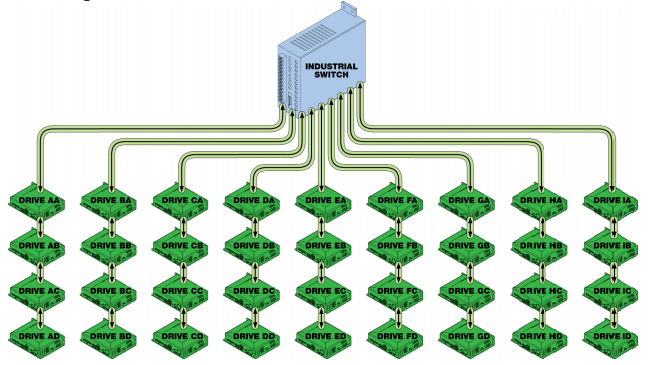
Figure 7: Best practice approach for daisy chaining drives.
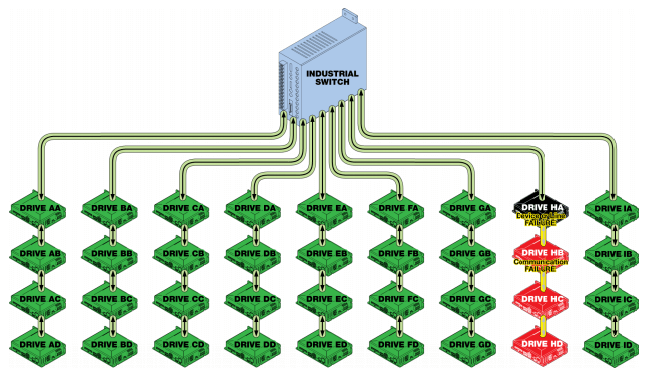
Figure 8: Using the best practice approach for daisy chaining drives together limits maximum drive failure to four drives in the communication system.
Avoid ring configurations to eliminate “network storms”
When implementing daisy chain architectures, it is important to avoid ring configurations. Some of the more expensive routers and switches do support spanning tree protocols, but these typically have dedicated hardware for the ring and are quite costly to implement. Network storms occur when messages are erroneously forwarded back and forth through ring architectures. These storms can be severe and can completely halt communication in a system (see Figure 9). Using a daisy chain configuration similar to Figure 8 would be a best practices approach.
Network storms are caused by messages that are forwarded back and forth through ring architectures. These storms can be severe, and can completely halt communications in a system. (See Figure 9) Using a daisy chain configuration similar to Figure 8 would be a better best practice approach.
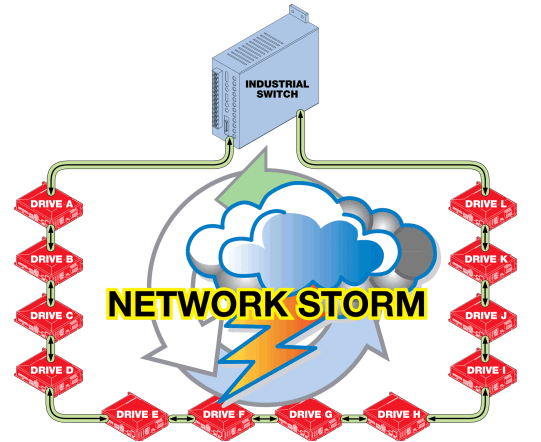
Figure 9: Effects of Network Storms.
Conclusion
Although electrical drive technology is very flexible, powerful and easy to use when designing a system, issues of electrical noise and communication integrity must be considered from the beginning of the process. Electrical noise cannot be eliminated completely and a communication system can never be completely fail-proof. The primary objective during system design is to mitigate the risks associated with each type of electrical interference and make intelligent financial decisions based on the operating environment and costs associated with the system failure modes, including loss of communication. By following these guidelines, risks associated with electrical noise and drive communication can be substantially reduced, and optimal system performance can be achieved.

 Ask an Engineer
Ask an Engineer